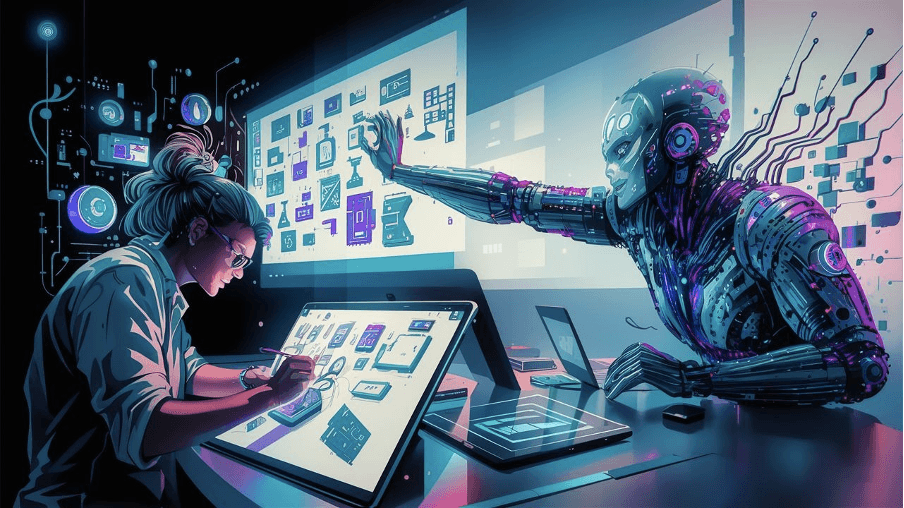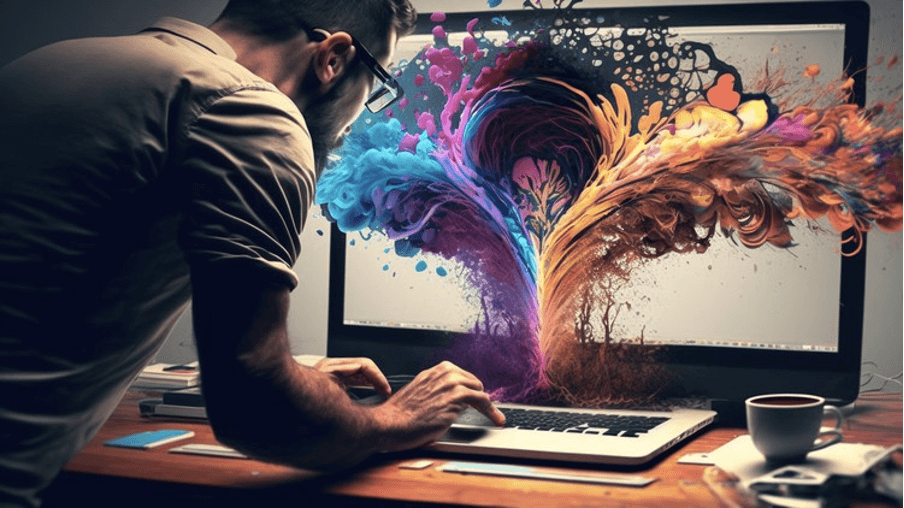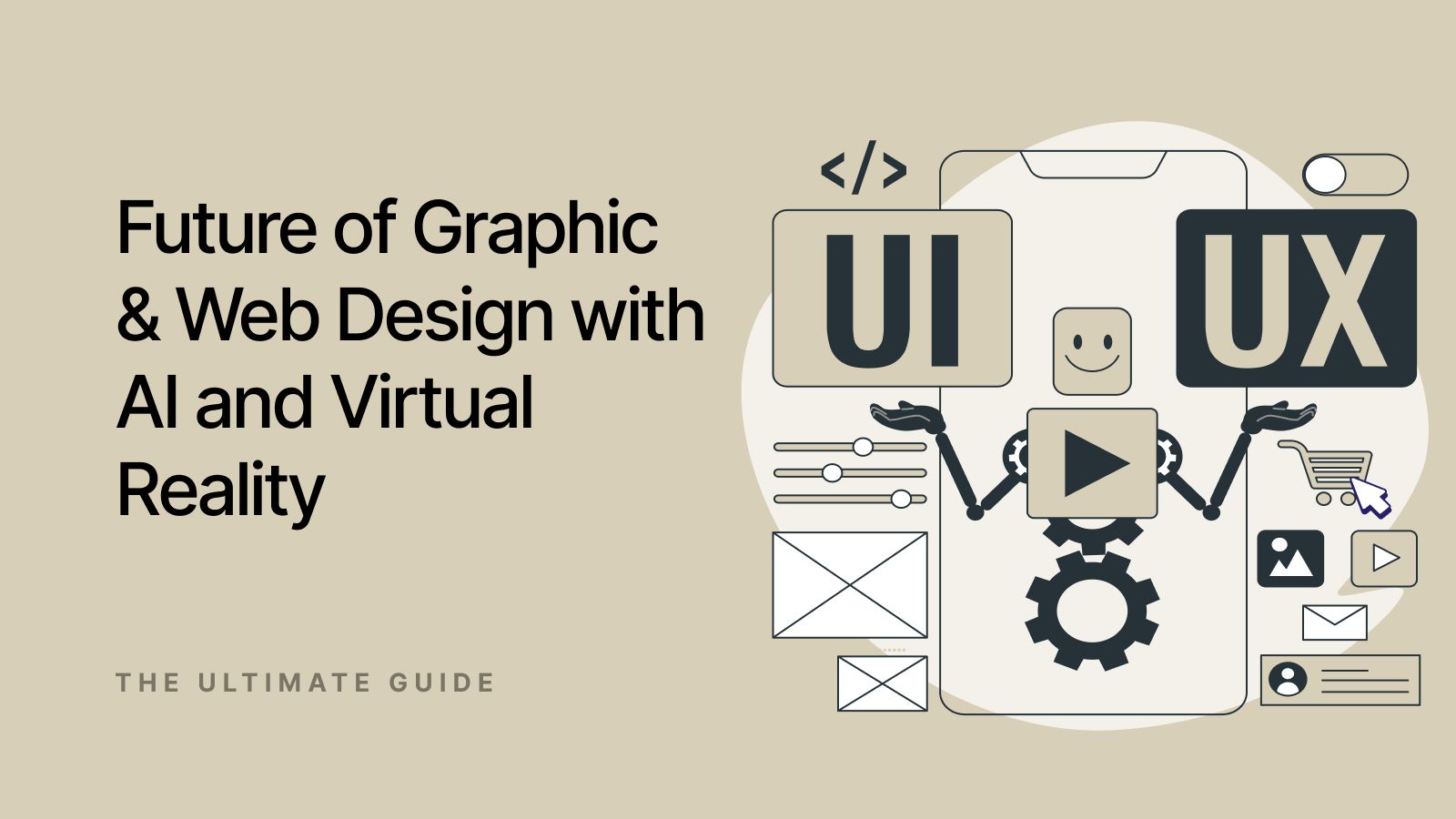Have you noticed that the field of graphic & web design is evolving before our very eyes? Ever wondered why? Well, to be brief, it’s mostly thanks to AI and VR. We’re all pretty used to those acronyms by now… but what are they doing when it comes to graphic and web design?
Pretty interesting stuff! They’re not just reshaping the way graphic designers and web developers approach their projects - they’re also totally reshaping the way users engage and what they expect to see. It’s really rather exciting, so we’re going to check out the changing dynamics, challenges, and opportunities that these new technologies are unfolding in the design universe!
Differences between artificial intelligence and virtual reality

To fully understand the implications of artificial intelligence and virtual reality in graphic & web design, it is crucial to clearly distinguish them. Artificial intelligence refers to the use of advanced algorithms to emulate human decision-making, automating tasks that would normally require human intervention.
In graphic & web design, AI can be used to automatically create layouts and graphic elements based on user data, optimizing the usability and visual effectiveness of a site. In the field of design, we also find open source business intelligence applications to use to create, for example, data visualizations and reports. One such case would be BIRT, an open source BI software known for its strong design and presentation features.
On the other hand, virtual reality is an immersive technology that simulates physical reality, allowing users to interact with a non-real environment through specific devices. This can greatly enrich the user experience by providing a fully immersive visual context, ideal for explorations or detailed presentations of products and services.
The impact of AI on graphic & web design
The application of artificial intelligence in graphic & web design is opening up previously unexplored possibilities. One of the most significant uses of AI is in personalizing the user experience. Advanced algorithms analyze user behaviors to dynamically adapt site content and layout, improving engagement and communication effectiveness. This not only increases user satisfaction but also site success metrics such as dwell time and conversion rates.
The benefits of artificial intelligence for e-commerce
Artificial intelligence is also radically transforming the e-commerce sector, bringing significant benefits to online sales sites, especially in terms of graphic & web design. When it comes to this kind of site, appearance is everything, and an AI can help guide designs to ensure layouts are optimized and intuitive, encouraging consumers to use the site. Nobody likes a poorly designed interface, especially when making a purchase!
AI can cause design hiccups, though, and we need to be aware of those. One of its benefits is that it allows for extremely precise personalization of each user's shopping experience, analyzing behavioral data to propose tailored products and offers. For example, thanks to machine learning algorithms, an e-commerce site can dynamically display complementary or recommended items based not only on the user's past interactions, but also on the similar shopping trends of other customers. However, while that’s useful, site designers need to think hard about how to display these suggestions in ways that won’t disrupt the current shopping experience or irritate users. That’s an ongoing challenge that changes with our habits!
Virtual reality as an engagement tool

In parallel, virtual reality is opening new frontiers for engaging customers and creating memorable user experiences. Through the use of VR viewers, companies can offer visitors to their websites a deeper and more interactive understanding of their products. This not only increases user interest and engagement, but can also lead to increased customer conversion and retention.
This level of interaction can significantly increase product interest and improve sales performance, as stated in the article “How AR Is Redefining Retail in the Pandemic,” written by Harvard Business Review, which observed a 94 percent increase in conversions in some industries. Again, however, this creates real challenges for web designers, who suddenly have to incorporate whole new - and very different - technology in the site to ensure it’s accessible for all viewers, not just those with VR equipment. For example, a Squarespace drop down menu may need to be adapted to work seamlessly within a VR environment, balancing traditional functionality with immersive experiences.
Challenges in adopting AI and VR in the graphic designer site
We all understand that integrating artificial intelligence and VR into graphic & web design projects presents several challenges, right? So here's the first challenge for you: these technologies require a high level of specialization and up-to-date skills, as well as state-of-the-art hardware and software; in short, it’s tricky!
Plus, the initial investment can be considerable, so it could potentially be a hurdle for small businesses or freelancers. However, in the long run, it is really worth it, and we can see the graphics design teams at large companies like Meta working on integrating things like 3D environments into their websites.
Future opportunities for graphic & web design
Despite the challenges, the future of graphic & web design with AI and VR is promising. Are you feeling the urge to get involved? We are certainly excited about the great things that can come out of the union of the human brain and this innovative technology!
What does the evolution of these technologies offer graphic designers? Well, they will certainly have the opportunity to explore new creative territories and improve the interaction and personalization of websites. Companies that are able to take advantage of these opportunities, balancing technological innovation and human creativity, will be able to stand out significantly in the marketplace; that's a fact!
So, as the industry continues to evolve, it is critical that design professionals remain informed and adaptable, ready to integrate these new technologies into our designs to create memorable user experiences and websites.
